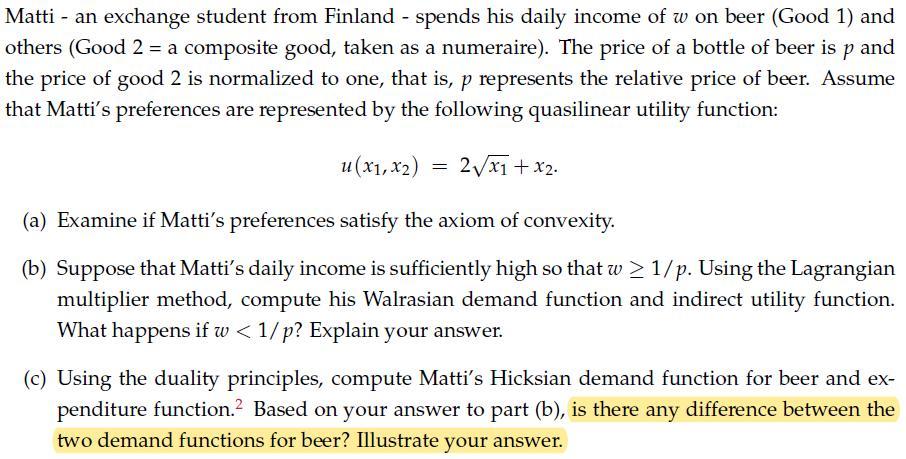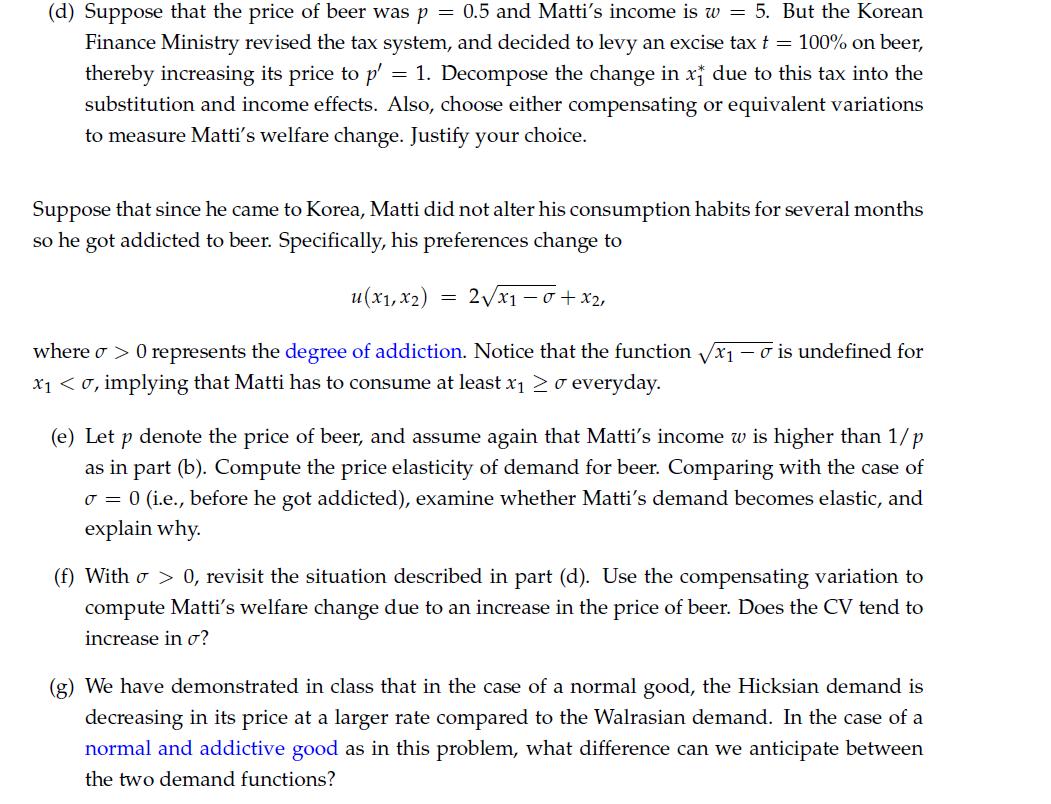Answered step by step
Verified Expert Solution
Question
1 Approved Answer
Matti - an exchange student from Finland - spends his daily income of w on beer (Good 1) and others (Good 2 = a


Matti - an exchange student from Finland - spends his daily income of w on beer (Good 1) and others (Good 2 = a composite good, taken as a numeraire). The price of a bottle of beer is p and the price of good 2 is normalized to one, that is, p represents the relative price of beer. Assume that Matti's preferences are represented by the following quasilinear utility function: 2x1+x2. (a) Examine if Matti's preferences satisfy the axiom of convexity. (b) Suppose that Matti's daily income is sufficiently high so that w 1/p. Using the Lagrangian multiplier method, compute his Walrasian demand function and indirect utility function. What happens if w < 1/p? Explain your answer. u(x1, x2) = (c) Using the duality principles, compute Matti's Hicksian demand function for beer and ex- penditure function. Based on your answer to part (b), is there any difference between the two demand functions for beer? Illustrate your answer. (d) Suppose that the price of beer was p = 0.5 and Matti's income is w = 5. But the Korean Finance Ministry revised the tax system, and decided to levy an excise tax t = 100% on beer, thereby increasing its price to p' = 1. Decompose the change in x due to this tax into the substitution and income effects. Also, choose either compensating or equivalent variations to measure Matti's welfare change. Justify your choice. Suppose that since he came to Korea, Matti did not alter his consumption habits for several months so he got addicted to beer. Specifically, his preferences change to u(x1, x2) = 2x1-0+x2, where > 0 represents the degree of addiction. Notice that the function x-0 is undefined for x 0, revisit the situation described in part (d). Use the compensating variation to compute Matti's welfare change due to an increase in the price of beer. Does the CV tend to increase in o? (g) We have demonstrated in class that in the case of a normal good, the Hicksian demand is decreasing in its price at a larger rate compared to the Walrasian demand. In the case of a normal and addictive good as in this problem, what difference can we anticipate between the two demand functions?
Step by Step Solution
★★★★★
3.55 Rating (166 Votes )
There are 3 Steps involved in it
Step: 1
a To examine if Mattis preferences satisfy the axiom of convexity we need to check if the utility function is quasiconcave A function is quasiconcave if the upperlevel set of any point x1 x2 is convex ...
Get Instant Access to Expert-Tailored Solutions
See step-by-step solutions with expert insights and AI powered tools for academic success
Step: 2

Step: 3

Ace Your Homework with AI
Get the answers you need in no time with our AI-driven, step-by-step assistance
Get Started


